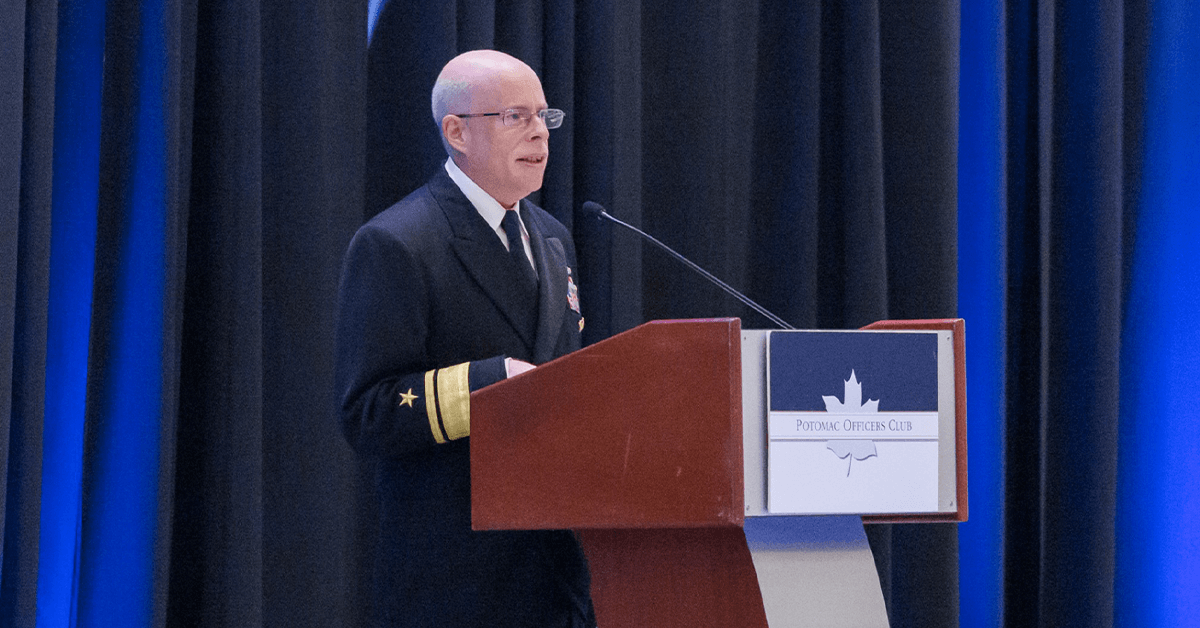The Office of Naval Research is employing science and technology strategies to help improve external partnerships and train the naval officers of tomorrow to develop critical Navy-Marine Corps capabilities.
During a keynote speech at the Potomac Officer Club’s 2024 Navy Summit, RADM Kurt Rothenhaus, the chief of Naval Research, spoke on the implementation of these programs and how they have enhanced technological development throughout the agency.
“As you can imagine, during these challenging times around the world at the Office of Naval Research, we are very much focused on several crucial technologies across the Navy-Marine Corps teams,” Rothenhaus said. “We know that the sailors and marines that we have the honor and privilege to serve are depending on us.”
However, before Rothenhaus spoke on the emerging strategies and technologies developed by the ONR, he made sure to relay that recent system production would only have been possible with innovative technical oversight.
“The amazing capabilities at work right now didn’t just happen. They were the culmination of inspired technical leadership over many years to go from basic research to delivering prototypes and experimentation into the acquisition pipeline or in many cases, directly from research to industry,” Rothenhaus emphasized.
During his keynote, Rothenhaus spoke about the importance of the Naval Science and Technology, or S&T, strategy, which was released on April 9 and is a “call to service across the globe” to innovators, scientists and engineers to help the Navy fight today’s problems.
ONR is organized around five science and technology departments — C5ISRT, ocean battlespace sensing, sea warfare and weapons, warfighter performance and naval air warfare and weapons — and a team of commands supporting other activities.
Rothenhaus said the S&T strategy “challenges us to strengthen our maritime technical dominance by accelerating our research, building a culture that assesses kinds of technology excellence by improving our S&T tradecraft, and partnering more around the globe with a focus on naval scientific diplomacy.”
One of these capabilities includes the P-8 Poseidon, a Boeing 737 that was converted to conduct anti-submarine warfare. The plane can move from 20,000 feet to below 500 feet and travel just above surface level.
Rothenhaus also believes the strategy contests the idea of the “valley of death” that companies face in transitioning their technologies from prototype to the battlespace. By taking on some of today’s toughest challenges using “grit and determination,” the agency can produce advanced capabilities to overcome developmental barriers.
“The reality is it just takes grit, perseverance and teaming to do the right thing, and I think we’ve got the team within the ONR who can get it done,” Rothenhaus emphasized.
Rothenhaus concluded his keynote by highlighting the NAVAIR HBCU/MI internship program, which is another way that the Navy is developing young minds who could be interested in serving in the future.
“Our STEM HBCU MI programs work across the nation to inspire young folks to serve both in uniform or as civilians in government or industry,” Rothenhaus said.
“I’ve had a chance to travel around the country and spend time in schools, and the next generation is eager and hungry to serve,” he added.
During the Potomac Officer Club’s inaugural GovCon International summit on Oct. 10, you can learn more about how international partnerships and coalition warfare are critical to developing emerging capabilities and the mission success of the nation’s warfighters. Secure your tickets now!



